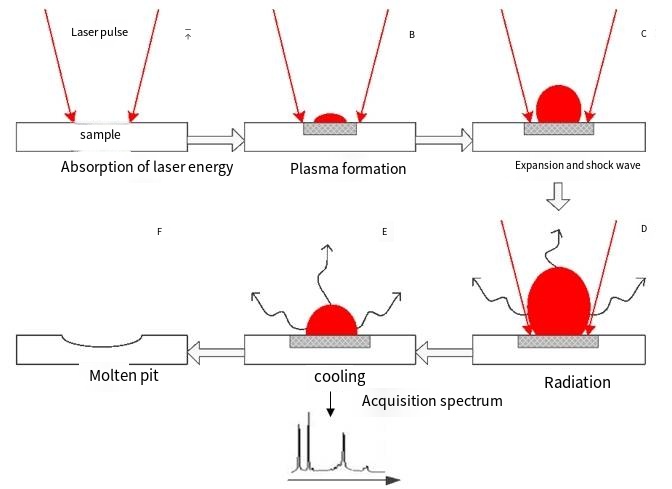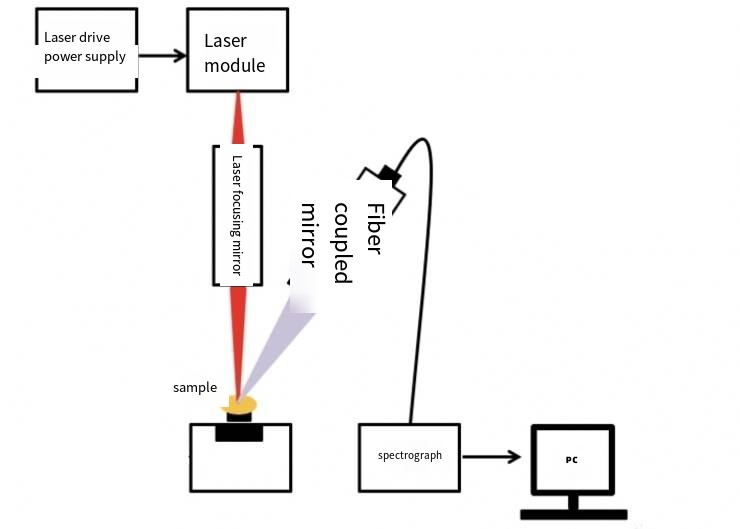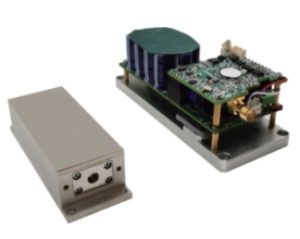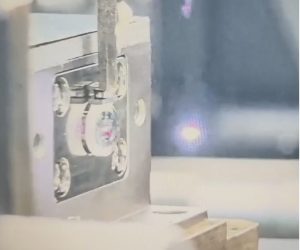Application of Solid-State Lasers in LIBS
In the 1960s, the research team led by David Cremers at Los Alamos National Laboratory in the United States first introduced the concept of Laser-Induced Breakdown Spectroscopy (LIBS). In 1963, team member Brech used a ruby laser equipped with a Q-switch to induce plasma formation in substances and applied it to chemical analysis. This marked the official birth of LIBS technology. Over the past 60 years, LIBS has been widely used in fields such as metal composition analysis, space exploration, environmental and waste monitoring, and cultural heritage identification. Meanwhile, many miniaturized or online analysis and detection systems based on LIBS have been developed.

Principle of LIBS Technology
LIBS technology works by focusing an ultrashort pulse laser on the surface of a sample, causing ablation and forming plasma. The emission spectrum of the plasma contains all elemental components of the material. By using a spectral acquisition system (typically a spectrometer) to capture and analyze the characteristic spectral lines, the elemental composition and concentration of the sample can be determined. Due to the high energy density achieved when an ultrashort pulse laser is focused, LIBS can, in principle, be applied to any state of matter (solid, liquid, or gas), with detection limitations only influenced by the wavelength range and sensitivity of the detector.
Components of a LIBS System
A complete LIBS system mainly consists of the following components:
① Excitation system, including the laser and laser focusing system.
② Sample stage for positioning and holding the sample.
③ Acquisition system, including coupling components and fiber optic spectrometers.
④ Analysis system, consisting of a PC, microcontroller, or other modules with analytical capabilities.

Key Components in LIBS Technology
For LIBS technology, two of the most critical components are ultrahigh peak power short-pulse lasers and fiber optic spectrometers capable of capturing multiple elements and resolving fine features. As a high-tech enterprise specializing in the independent research, development, production, and sales of microchip lasers, Beijing RealLight Technology Co., Ltd. provides a powerful excitation light source for this application field.
Our flagship PQE series high-energy solid-state lasers adopt a solid-state passive Q-switching scheme, featuring high energy output, cost efficiency, and low power consumption. With a minimum pulse width of 3 ns and a maximum single-pulse energy of 10 mJ, these lasers offer ultra-high peak power, easily exciting metallic solid samples as well as various gases. Furthermore, their compact size facilitates system integration, making them ideal for handheld, portable, and online LIBS applications.

PQE Series High Energy Solid-state Laser

Ionizing Air Experiment
Beijing RealLight Technology Co., Ltd. looks forward to becoming your partner, using laser technology to create value for you!
Disclaimer: Some content in this article is sourced from the internet for technical research and exchange purposes only and is provided for reference and learning. If there are any inaccuracies or academic errors, we welcome corrections. If there are any copyright concerns, please contact us, and we will promptly verify and remove the content.


